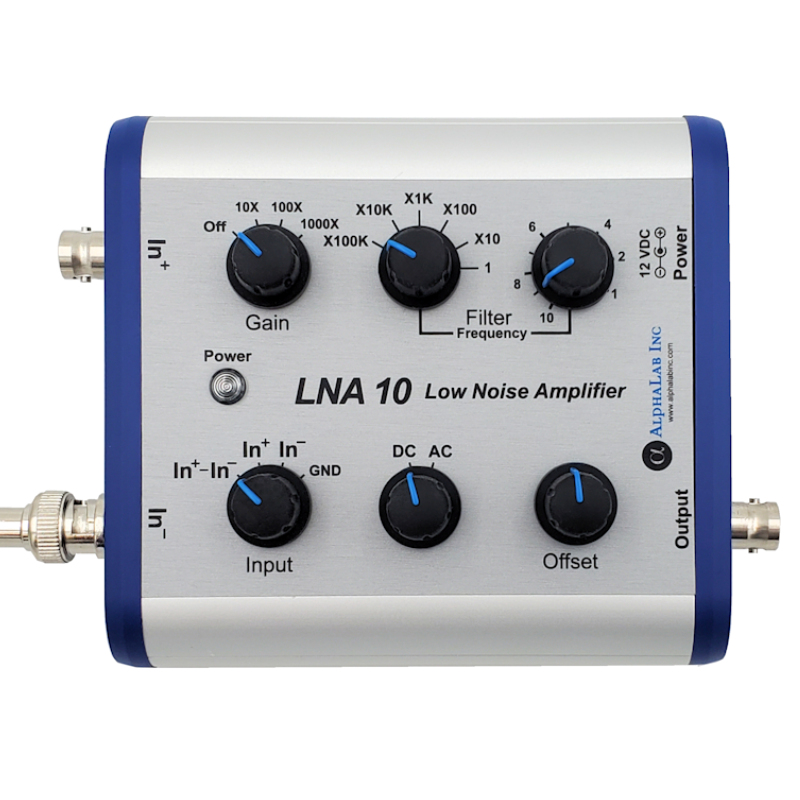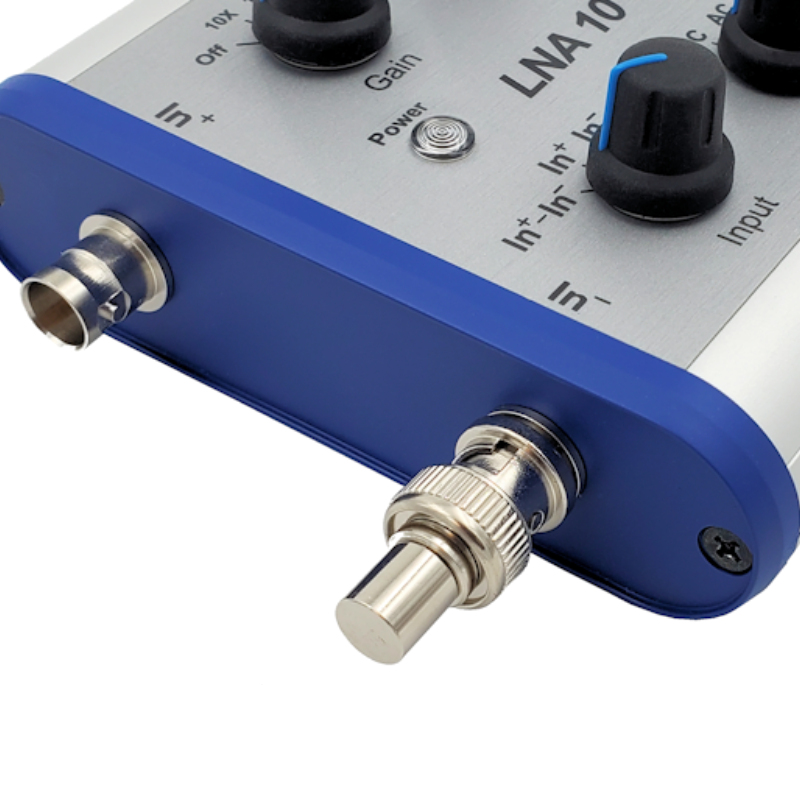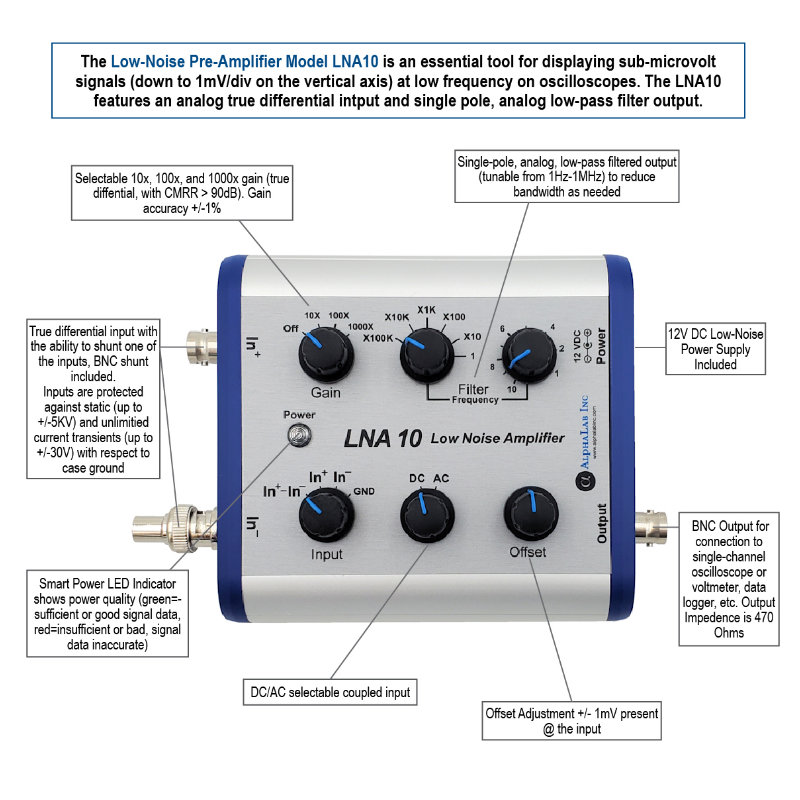Description
With the LNA10 oscilloscope preamplifier, sub-microvolt signals can be displayed on oscilloscopes which typically only go down to 1mV/div on the vertical axis. This preamp includes an analog true differential input and an analog low-pass filter (tunable 1Hz-1MHz). Input-referenced RMS noise spectrum for f >100Hz is 4nV/√Hz or less. So for example, even with 1000 x gain, total noise from 100 Hz to 1000 Hz is less than 1 div peak-to-peak on a 1mV/div vertical scope setting (assuming a low-impedance input).
Most oscilloscopes are designed to display high-frequency (fast) events that may intrinsically have noise of a millivolt or more. However, low-frequency signals have much less intrinsic noise, so a low-noise preamp and a bandwidth-limiting filter are essential for small signals at low frequency.* Most amplifiers have a white noise spectrum (a flat spectral curve) at all frequencies above ~1000 Hz. This white noise spectrum is usually specified as a certain number of nV per √Hz. However, unlike typical passive resistors, the equivalent input noise spectrum of solid-state amplifiers (in nV/√Hz) becomes higher at low frequencies. Typically the number of nV/√Hz is proportional to ~1/f for f ≤10Hz. The Noise Characteristics table (located under Specifications) shows actual noise of the LNA 10 in various frequency ranges. At all frequencies, the LNA 10 has much less noise than typical solid-state amplifiers.
*The intrinsic “white” noise of a resistive electrical circuit at room temperature is proportional to √(R∙Δf), which is the square root of the product of source resistance multiplied by the bandwidth being investigated. For low source resistance and low frequencies, noise is low. For example, a 1000 Ω resistor will have an intrinsic RMS noise of 13 nV in a Δf =10 Hz bandwidth, with 10 Hz being the bandwidth, for example, associated with the frequency range 0-10 Hz, or with the frequency range 102 Hz-112 Hz. The noise will become twice as much if the bandwidth being studied is 4 times as wide (i.e., 40 Hz), or if the resistance is multiplied by 4.





